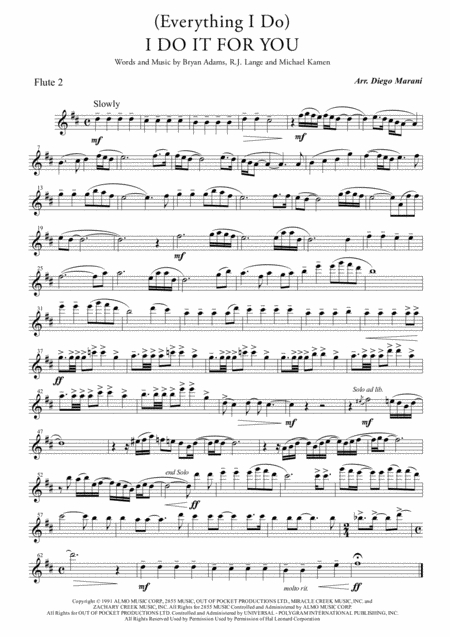Woodwind Ensemble,Woodwind Quartet Flute - Level 3 - Digital Download SKU: A0.527780 By Bryan Adams. By Bryan Adams, Michael Kamen, and Robert John Mutt Lange. Arranged by Diego Marani. Contemporary,Film/TV,Instructional,Pop,Standards. 10 pages. Diego Marani #3456235. Published by Diego Marani (A0.527780). (Everything I Do) I Do It for You is a song by Canadian singer-songwriter Bryan Adams. Written by Adams, Michael Kamen and Robert John Mutt Lange, featured on two albums simultaneously on its release, the soundtrack album from the 1991 film Robin Hood: Prince of Thieves and on Adams' sixth album Waking Up the Neighbours (1991). The song was an enormous chart success internationally, particularly in the United Kingdom, where it spent sixteen consecutive weeks at number one on the UK Singles Chart (the longest in British chart history). It went on to sell more than 15 million copies worldwide, making it Adams' most successful song and one of the best-selling singles of all time. Subsequently, the song has been covered by hundreds of singers and artists around the world.This arrangement for flute quartet includes the following parts: Flute 1, Flute 2, Flute 3, Flute 4 or Alto Flute.It is suitable for repertoire, classroom, recital and wedding.
